Why Do We Stretch? The Importance and the Bottom Line

No matter what your home gym space looks like, working out is important to you; it’s part of your life and routine. You probably want to just jump into lifting and cardio. After all, the satisfaction after a good workout day is pretty unmatched.The thing is, you can’t just run in guns blazing if you’re hoping to gain massive guns yourself.
Stretching is one of the most important parts of any workout, and it’s something you’ve probably been taught from a young age. Physical education teachers have kids do butterfly stretches or try to touch their toes almost every day before class to preach how essential these simple movements can be.
Many people know that stretching before a workout is important, but not many people know why. And on top of that, even more people don’t know that you’re also supposed to stretch after a workout.
So why do we stretch? And what exactly is it doing for our workout? Let’s jump in and talk about how essential this simple practice really is.
Importance of Stretching
Have you ever felt super sore the next day after a workout? As much as you want to believe, it’s probably not because you were lifting extremely heavy weights. It’s actually likely due to the fact that you didn’t properly stretch beforehand.
Stretching keeps your muscles flexible. Not only will this finally let you touch your toes, but it will also help prevent injury during your workout. Stiff, tight muscles don’t have the same range of motion as loose, limber ones. So if you don’t stretch your legs before doing deadlifts, you increase the risk of straining or pulling a muscle and causing yourself unnecessary pain.
With that in mind, stretching can improve your athletic performance during sports or a workout. Think of it like this: you’ve been lounging on the couch all day until you decide to go for a run at night. Your muscles have been stiff all day long, so how do you think they’ll feel during your run?
The answer is that they’ll be sore and achy, and you’ll need to be careful of every step you take. You might feel pain set in after just a couple of minutes, causing you to end your run before even getting close to your PR.
Healthy muscles can even help you gain better balance to avoid falls, which is super important for elderly populations or people who are just a bit clumsy in general.
Post-Workout Stretching
Stretching before a workout is important, but it’s equally important to loosen those muscles after a workout as well. Your body is constantly sending oxygen to your muscles and tissues, but during exercise, the body isn’t able to supply enough oxygen to meet its needs.
As a result, glucose stored in your muscles converts into a chemical called pyruvate which is further broken down into lactic acid, which facilitates energy production in the cells.
Lactic acid build-up is what causes your muscles to feel stiff and sore after a vigorous workout, but stretching helps to break up this acid to loosen your muscles and prevent achiness. So when you’re done lifting, spend a few extra minutes extending the most active muscles. This way you can get back to your workout routine and go just as hard the next day.
Types of Stretches
If you’ve ever stretched before, you’ve probably done a static stretch. This means you’re extending a muscle to its maximum point of flexion and holding it for 20-30 seconds. A seated hamstring stretch where you try to touch your toes is an example of one of these.
The thing is, these actually haven’t shown to do anything beneficial pre-workout. While they’re great for post-workout cooldowns to blast away that lactic acid, there are better stretches to do before you start pumping iron.
One of the best types of stretches to do before a workout, especially one that’s cardio-focused, is the dynamic stretch. These incorporate the gentle, controlled movement of a muscle. A spinal twist to work your obliques is an example of a dynamic stretch.
These are great because they increase your flexibility and can also act as a bit of a warm-up to raise your core temperature and prepare you for the upcoming workout.
Active stretches are another insanely effective type of stretch that you should incorporate into your pre-workout routine. With these, you maintain a static position, but you hold the muscle at a point where there is no resistance other than the agonist (contracting) muscle. For example, laying on the floor and holding your leg in the air (do this with added resistance from the Gorilla Bow for a seriously effective stretch).
These strengthen agonist muscles while also improving your flexibility. They’re difficult to maintain for longer than ten seconds, so don’t try to over-exert yourself.
Passive stretching is similar to active stretching, but you’ll push your muscle past its normal limits with another part of your body. For example, in a tricep stretch, you use one arm to gently extend the other arm past its normal range of motion. This is a great stretch if you’re looking to gain flexibility, but they’re also useful when relieving tenderness after an injury.
Stretches to Avoid
One type of stretching, known as ballistic stretching, has come under fire recently for being more dangerous than effective. These moves involve “bouncing” movements that push your muscles past their natural range of motion. An example is a butterfly stretch where you sit on the floor and bounce your legs up and down like you’re a butterfly.
The issue with these is that they are uncontrolled and bombastic. If you do them incorrectly, you can easily pull a muscle or strain one of your joints. Dynamic stretches are much more controlled and can get you the same effect.
That’s not to say there’s no place for ballistic stretches. Professional athletes can do them under the supervision of a personal trainer. But for the general population, they’re best left unused.
Our Pre-Workout Routine
If you haven’t done much stretching as part of your exercise regimen, it’s never too late to get started. But it’s only one of three main factors to incorporate into your routine before you start getting to work.
First things first, proper pre-workout snacks are essential. Carbs get a bad rap, but they’re actually very important to chow down on before a workout. They give you the energy that your body needs to push through, and it will use this energy from food before it starts taking away from muscle mass.
Great complex carbs to eat before a workout include oatmeal, quinoa, or sweet potatoes. We also love eating fruits like apples or bananas before cardio workouts, like HIIT or Tabata.
After that, you need to do a warm-up. Note that this is not the same thing as stretching. These are movements that are meant to raise your heart rate and loosen stiff muscles.
Your warm-up should closely mimic the activity you’re about to complete. For example, a great warm-up before a run is light jogging. Before lifting, do some jumping jacks or plank step-outs to get your whole body moving.
Finally, you can stretch. We recommend dynamic stretches and passive stretches before a workout, as they can loosen your muscles and increase flexibility, respectively. One of our go-to dynamic stretches is the march and reach, as this activates muscles in your legs as well as your shoulders.
Passive stretches can isolate certain muscle groups, so something like pulling your quadriceps towards your chest and holding for a few seconds is a really great way to extend your muscles beyond their natural range.
The Cool Down
Stretching is an important component of any workout routine. It enhances your flexibility, helps prevent injury, improves your performance, and helps you gain better balance. Stretching is even essential after a workout to help break up lactic acid and prevent muscle soreness.
There are plenty of different types of stretches like dynamic, passive, or static positions. Each helps to improve flexibility, and some have even more benefits than others.
You should stretch after a proper warm-up that involves raising your core temperature to help loosen stiff muscles and get your heart rate above its average resting pace. This will help you reach peak performance during the actual exercise itself.
Like these tips? There are a lot more where that came from. For live and on-demand fitness classes, nutrition tips, and wellness tactics, the Gorilla Bow All-Access Membership is your one-stop shop for maximum results. It’s the perfect accompaniment to your resistance training regimen.
Sources:
The importance of stretching | Harvard Health Publishing
Why Does Lactic Acid Build Up in Muscles? And Why Does It Cause Soreness? | Scientific American


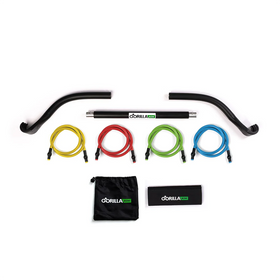
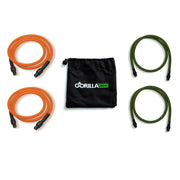
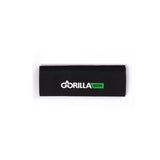
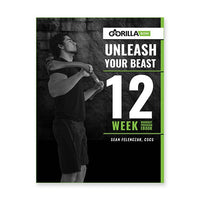
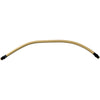



Leave a comment